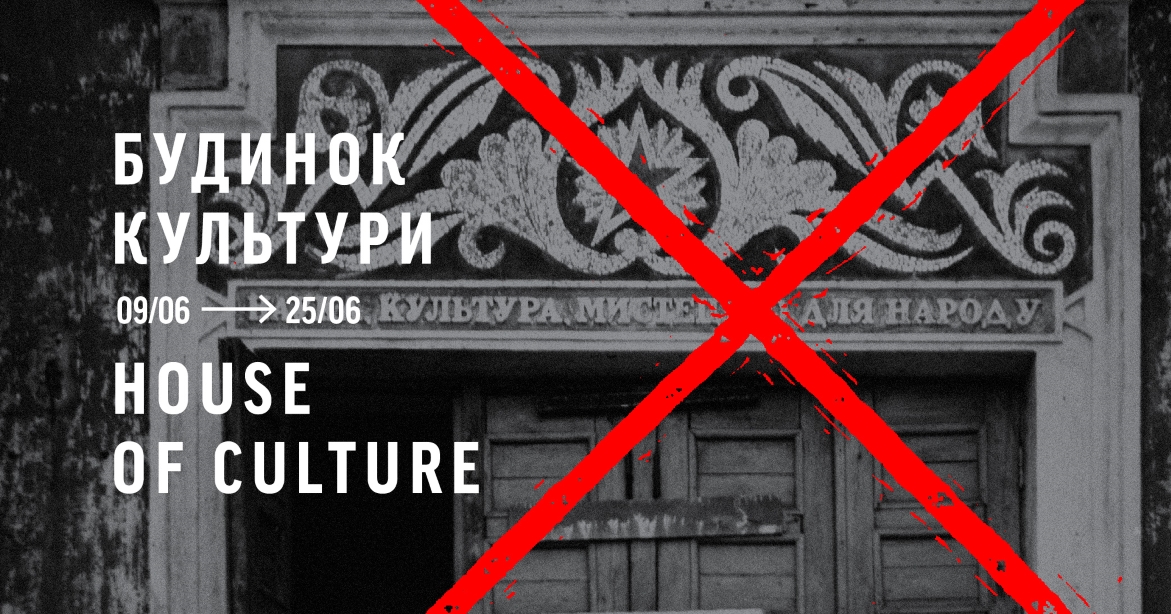House of Culture

9 June 2017 — 25 June 2017
On June 9, 2017, marking the third year of exile, IZOLYATSIA opened a restrospective exhibition House of Culture.
Back in Soviet times, a factory was more than a mere workplace – it created a whole micro-universe for the workers. Each factory used to have its own infrastructure: kindergarten, school, first aid post, gym, club, a house of culture. When after the collapse of the Soviet system most giant factories closed down, people did not only lost their workplaces – they were depraved of an important site of social life and pastime.
The history of IZOLYATSIA stems from the industrial past. Based on a vast territory of the former insulation materials factory, the institution’s team aimed to breathe a new life in the plant, creating an alternative place for active leisure and thus forming new ways of social interactions.
Among the methods of transforming the cultural space were international artist-in-residence programmes. In 2011, IZOLYATSIA initiated a residency for young photographers titled Partly Cloudy and curated by Boris Mikhailov, a classic of the contemporary conceptual photography. The resulting exhibition represented reflections of eight participants from seven countries and their experiences during the research in several cities of the Donetsk region. One of the objects they studied was the abandoned Palace of Culture in Horlivka. This House of Culture was one of those phantoms of the past that IZOLYATSIA opposed while working in Donetsk and that it is now trying to make sense of, after relocating to Kyiv.
The exhibition House of Culture consists of works by Flavia Junqueira (Brazil), Andrei Loginov (Belarus/Germany), Marco Citron (Italy), Marina Black (Canada), Dima Sergeev, and Zhanna Kadyrova (Ukraine). The photographs created in various periods document the process of slow decay of the building of Horlivka’s Palace of Culture, erected in 1951.
At the centre of the exhibition is a projection of a photograph by Dima Sergeev featuring the façade of Horlivka’s House of Culture crowned with a slogan “Science, Culture, and Art for the People.” Quite symbolically, a part of the entrance to the building is sealed with planks.
Marina Black inscribes a figure of a young girl into the ruins. The series uses a quote from the French author Albert Camus as an epigraph: “This divorce between man and his life, the actor and his setting, is properly the feeling of absurdity.” A blurred silhouette of the girl almost blending in with the ruins is a visualisation of Marina’s phantom memories gradually turning into ghosts.
Panoramic photos by Andrei Loginov give insight into the scale of the abandoned spaces of the House of Culture: an auditorium, a hall, a garden. Torn from darkness by a flashlight, a figure of a girl examining something in her palm bears resemblance to the characters of Karl Bryullov’s The Last Day of Pompeii, but unlike them, she watches nonchalantly her pedestal crumble to dust and her concrete skin stripping down, as the phoney metallic paint peels off.
Flavia Junqueira studies the connections people create between places of memory, objects and spaces they inhabit. In her series, she transformed the ruins of Horlivka’s House of Culture into a post-apocalyptic playground. Balloons, Micky Mouse, and plush ponies only enhance the atmosphere of suspense.
Many photographs (Andrei Loginov, Marco Citron, Dima Sergeev, Flavia Junqueira) feature seats in the ruined auditoriums. This may be interpreted as questioning the role that each of us plays in this process of cultural destruction/destruction of culture: passive spectators, commentators, or reformers.
A separate part of the exhibition is the phantom library/archive of IZOLYATSIA. On the one hand, it is a collection of posters created in the Donetsk period of the institution’s history as well as video documentation of performances, books and booklets of the accomplished projects; on the other hand, it is a library cataloguer full of dust and wreckage as a reference to the recent events that saw most of the foundation’s archive destroyed during the seizure along with site-specific objects and other works of art. The photographs of a ruined library in Horlivka draw a parallel to the House of Culture in the same city and the decay that IZOLYATSIA had to deal with and revitalise.
As a side note to the exhibition, Zhanna Kadyrova’s Honour Board is a work that was on display in Donetsk and was damaged during IZOLYATSIA’s seizure in 2014. The work is exhibited unrestored, as a documental testimony of the events that took place three years ago.
The process of inventory of a private collection is in many ways similar to the process of cultural inventory of a country. Owners would periodically revise their collections to understand what gained in price or relevance, and what became rubbish. The Palace of Culture in Horlivka is but one of the countless visual examples of the state of most palaces of culture in Ukraine: many of them continue to crumble and disappear from the map of architectural heritage. Today these ruins remind us that, despite a long transition from industrial to post-industrial and information society, Ukraine has not changed its attitude towards cultural heritage. But if ruins of a Soviet house of culture are a kind of elegy, a visual manifestation of the decay of the Soviet regime and Soviet social body, what places shall we construct now in order to give way for a new sociality?
EXHIBITION DETAILS
Curators:
Lina Romanukha, Dima Sergeev
Participants:
Marina Black, Marco Citron, Flavia Junqueira, Zhanna Kadyrova, Andrei Loginov, Dima Sergeev
Schedule:
June 9 – 25, 2017, Monday to Sunday, 12 PM – 8 PM
Address:
IZONE Creative Community, 8 Naberezhno-Luhova Street, Second Floor.